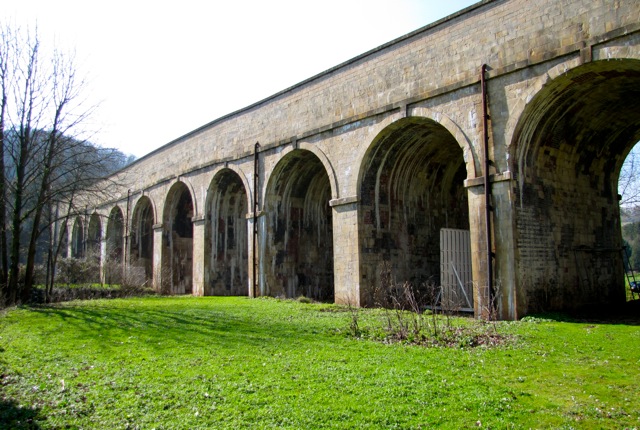.
The Viaduct
Limpley Stoke, Bradford on Avon, Wiltshire and Monkton Combe, Somerset
.

The first road south from Bath to Warminster built by the Black Dog Road Trust involved long steep gradients from Bath over Combe Down, descending to Midford before climbing again to Hinton Charterhouse. This is now the B3110 road. The Trust decided on making a second road that left Bath from Great Pulteney Street, climbed above Bathampton then through Claverton to Monkton Combe, crossed the narrow triangle of Wiltshire at Limpley Stoke and went onward above Freshford to reach the first road at Wolverton. This is the line of the modern Warminster Road, the A36. Some hills could not be avoided, especially the steep-sided valley of the Wellow Brook near where it joins the River Avon, between Monkton Combe and Limpley Stoke. The solution there was to carry the road across by a long bridge or viaduct, so that it hadn’t lost too much height before climbing the hill by zigzags at Limpley Stoke.
The Viaduct is 348 feet (106m) long, 38 feet (11.6m) high of eleven equal arches 21 feet (6.4m) wide. It was designed in 1825 by the Somerset County Surveyor George Allen Underwood (1793-1829), who had died before it was begun in June 1834. It is likely to have been completed by George Phillips Manners (1789-1866), architect of many buildings in Bath and of several in Bradford on Avon. It was built of squared coursed Bath Stone by David Aust, who was the builder of North Parade Bridge in Bath in 1836. It was completed in October 1834 -only four months and the whole road opened in the following year.
There has been a little subsidence at the centre of the structure, which was probably the reason for the ‘Immediate and costly repairs’ required in 1878.
It is a listed building, grade II.

